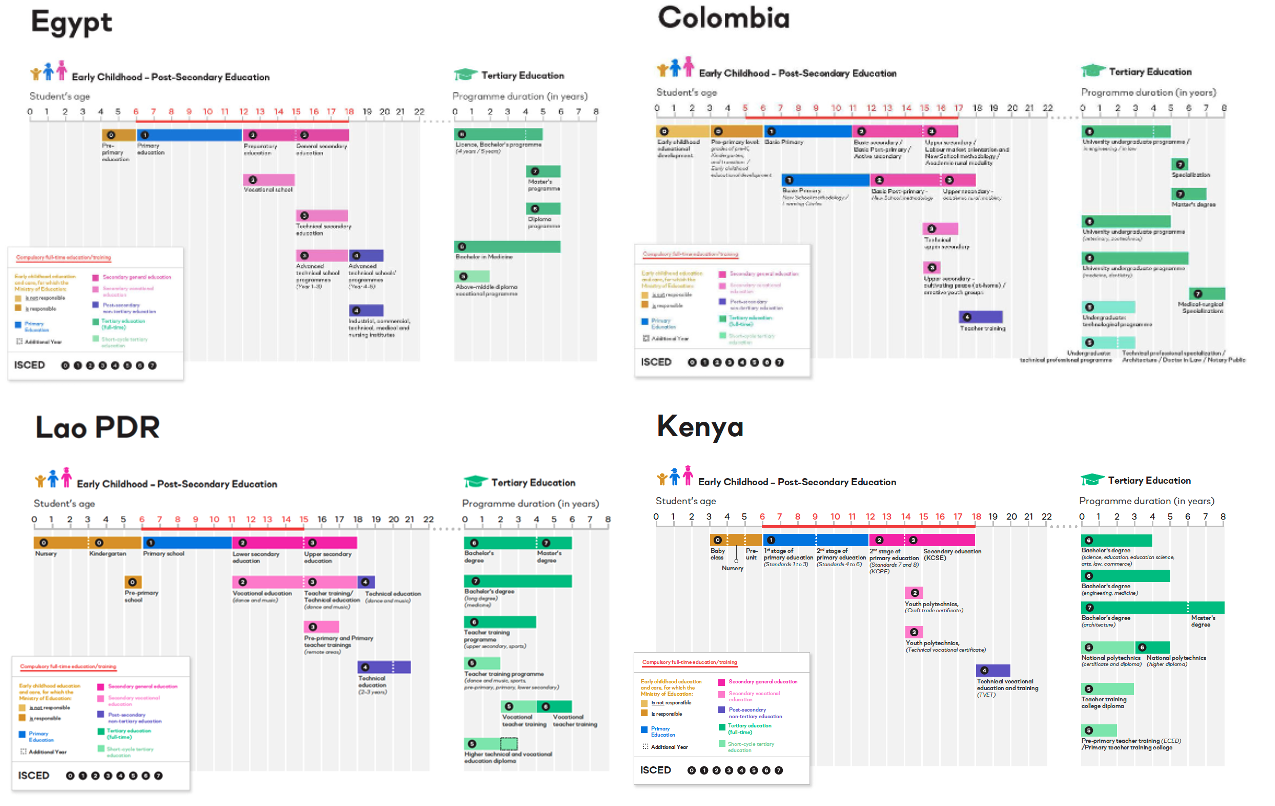Silvia Montoya, Director, UNESCO Institute for Statistics and Manos Antoninis, Director, Global Education Monitoring Report
The International Standard Classification of Education (ISCED) was established in the 1970s and updated in 1997 and 2011 to categorize information on education systems in a way that facilitates cross-national comparisons of education statistics. For all countries outside of the OECD and the European Union, these systems are now available in diagram form and in multiple languages thanks to joint work by the UIS and the GEM Report. As from today, they can be accessed at a new ISCED website hosted by the UNESCO Institute for Statistics (UIS), and at the GEM Report’s PEER website of country profiles. ISCED diagrams for the OECD and the European Union countries are available on their respective websites.

The diagrams help visualize different education system characteristics, including the age of students at different education levels or the length of study required for different tertiary education degrees.
For both the UIS, which collects and produces data on SDG 4, and the GEM Report, which analyses such data in its annual publications, ICSED plays an important role. Additional resources related to ICSED sit on the UIS’ new, dedicated website, including previous reports, and the mapping of each Member State’s education systems in Excel, which form the basis of the visual diagrams.
The site also houses the recently produced UIS report, Using ISCED Diagrams to Compare Education Systems, which presents the education systems of 133 countries in visual format. The report explains each ISCED level and how the diagrams were created, along with ISCED’s governance structure, as well as challenges and recommendations. This is followed by a global analysis of ISCED, which considers how education systems compare in the context of the 2030 Agenda. More detailed analyses of the systems in the Arab States, Asia and the Pacific, Latin America and the Caribbean and sub-Saharan Africa are also provided.
It is our hope that these visualization resources will give policymakers, national statistical offices, international organizations and academia a better understanding of ISCED and its importance in monitoring the 2030 Agenda by providing a framework for organizing education systems in a way that allows for cross-national comparability.
Leave a comment